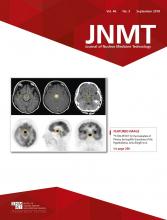REPLY: We would like to respond to the critique recently submitted to the Journal of Nuclear Medicine Technology regarding our article titled “Adapting a Standardized, Industry-Proven Tool to Measure Patients’ Perceptions of Quality at the Point of Care in a PET/CT Center.” First, we would like to thank Dr. Geoff Currie for his insightful comments regarding a common debate in the epidemiology and public health community regarding how to handle ordinal data. In his critique, Dr. Currie writes, “The Likert scale used rendered the data ordinal in nature. The statistical analysis treated the data as though it were continuous data, and this represents a fatal flaw.”
Much has been written regarding the appropriate analysis of ordinal data, and whether parametric tests such as the t test can be used to treat ordinal data as continuous. For example, Dr. Geoff Norman, a renowned expert in medical education research methodology, has shown that parametric tests can be used to analyze ordinal data (1,2). Moreover, he concludes that parametric tests are generally more robust than nonparametric tests when analyzing ordinal data such as that seen in Likert scales, even when statistical assumptions (such as normal distribution of data) are violated.
Thus, we disagree with Dr. Currie’s critique and stand by the results of our article. We believe the P values from our data in Table 3 to be valid because they represent results from a 2-sample t test, a parametric test that treated ordinal data from a 7-point Likert scale as continuous. We do agree, however, with Dr. Currie that reporting median values as opposes to means may have been a better expression for central tendency, because the data from a Likert scale is ordinal. On the other hand, reporting means does not invalidate a study using a Likert scale, as eloquently pointed out by Sullivan et al. (1).
Thank you so much for allowing us to explore such an important topic regarding statistical methods in research. We hope this response is informative and sheds insight into why we chose to handle ordinal data as continuous.
Footnotes
Published online May 3, 2018.







